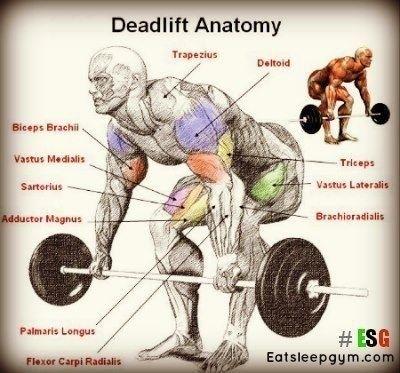A well-defined, strong back is not only aesthetically pleasing but also crucial for overall physical health and functional movement. Whether you’re an athlete striving for peak performance, a fitness enthusiast aiming for a balanced physique, or someone looking to improve posture and reduce back pain, incorporating the right exercises into your routine is essential. In this article, we will explore the most effective exercises to build a robust and sculpted back, drawing on expert insights and scientific research. By following these guidelines, you will be well-equipped to enhance your back strength, improve your posture, and achieve a more chiseled appearance. Let’s dive into the best exercises that will help you achieve a strong, defined back.
Mastering Pull-Ups: Techniques for Maximum Muscle Engagement
To elevate your back workout and achieve those coveted muscle gains, mastering pull-ups is essential. Proper technique ensures maximum muscle engagement and minimizes the risk of injury. Here are some key tips to optimize your pull-up form:
- Grip Width: Adjust your grip to shoulder-width or slightly wider. This targets the lats more effectively, promoting a broader back.
- Engage Your Core: Tighten your core muscles throughout the movement. This stabilizes your body and enhances overall control.
- Full Range of Motion: Lower yourself completely until your arms are fully extended, and pull up until your chin is above the bar. This ensures comprehensive muscle activation.
- Controlled Movement: Avoid swinging or using momentum. Perform each rep with a controlled, deliberate motion for optimal muscle engagement.
- Breathing Technique: Inhale as you lower yourself and exhale as you pull up. Proper breathing aids in maintaining rhythm and stamina.
Incorporate these techniques into your routine to see significant improvements in strength and definition. Consistency and precision are your allies in achieving a powerful, sculpted back.

Essential Row Variations: Building Thickness and Strength
Rows are indispensable for sculpting a formidable back. They not only enhance muscle thickness but also bolster overall strength. Incorporating different variations can target various parts of your back, ensuring balanced development. Here are some essential row variations you should consider:
- Barbell Rows: This classic move targets the middle back, lats, and traps. Maintain a flat back and hinge at the hips to maximize muscle engagement.
- Dumbbell Rows: Offering a greater range of motion, dumbbell rows help in isolating each side of your back. Perform them on a bench for added stability.
- T-Bar Rows: Perfect for building back thickness, T-bar rows allow you to lift heavier weights, thus intensifying muscle growth.
- Inverted Rows: An excellent bodyweight exercise that strengthens the upper back and improves grip strength. Adjust the difficulty by altering the angle of your body.
- Seated Cable Rows: This variation provides constant tension throughout the movement, making it ideal for muscle hypertrophy.

Deadlifts and Their Variants: The Foundation of a Powerful Back
Deadlifts are often hailed as the king of back exercises, and for good reason. They engage multiple muscle groups, including the erector spinae, traps, and lats, ensuring comprehensive development. However, the magic of deadlifts doesn’t end with the conventional form. Variations of this exercise can target different areas and add diversity to your routine:
- Romanian Deadlifts: Focus on the hamstrings and lower back, enhancing flexibility and strength.
- Sumo Deadlifts: Utilize a wider stance to emphasize the inner thighs and reduce strain on the lower back.
- Trap Bar Deadlifts: Offer a more ergonomic lift, reducing stress on the spine while still working the entire back.
Incorporating these variants not only prevents workout monotony but also ensures balanced muscle development, making your back stronger and more defined.

Incorporating Resistance Bands: Enhancing Back Definition and Stability
Resistance bands are an excellent addition to your back workouts, providing both versatility and increased muscle engagement. These bands can be integrated into various exercises to target different areas of the back, from the upper trapezius to the lower lats. Here are some key exercises to consider:
- Band Pull-Aparts: Stand with feet shoulder-width apart and hold a resistance band with both hands at shoulder height. Keeping your arms straight, pull the band apart by squeezing your shoulder blades together. This exercise enhances the definition of the upper back and improves posture.
- Seated Rows: Sit on the floor with legs extended and loop the band around your feet. Hold the ends of the band with both hands and pull towards your torso, keeping your elbows close to your body. This movement targets the mid-back muscles, enhancing thickness and stability.
- Lat Pulldowns: Secure the band above your head and kneel down, gripping the band with both hands. Pull the band down towards your chest, engaging your lats and maintaining a straight back. This exercise effectively mimics the traditional lat pulldown, building width and strength in the upper back.
Incorporating these band exercises into your routine can significantly improve back muscle definition and overall stability, making them an indispensable tool for achieving a stronger, more sculpted back.





